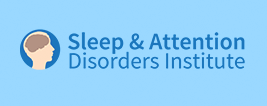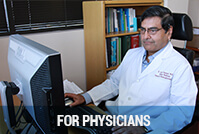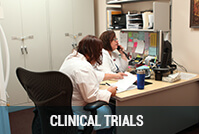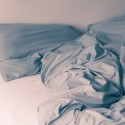
Five Adult Sleep Disorders
Long gone are the days when sleep was considered a luxury. A good night’s sleep is now understood to be just as, and possibly more, important than a balanced diet and exercise. In fact, the Centers for Disease Control and Prevention currently classify insufficient sleep as a full-blown public health problem. Lack of sleep not only occurs for a variety of reasons but is also at least partially responsible for an assortment of mental and physical problems in otherwise healthy adults. Sleep apnea, hypersomnia, narcolepsy, insomnia, and parasomnia are just five of the conditions that contribute to more than a quarter of the US population reporting that they do not get enough sleep—meanwhile 10% of the population reports experiencing chronic insomnia. Getting an appropriate amount of sleep is in no way an extravagance or indulgence; according to the CDC it is a “vital sign” of good health. Five of the sleep disorders that are possibly standing between American adults and their 7-8 hours of much-needed nightly rest are as follows: Insomnia, Sleep apnea, Hypersomnia, Narcolepsy and Parasomnia.
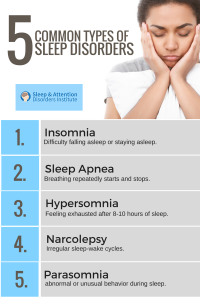 Types of Sleep Orders in Adults
Types of Sleep Orders in Adults
Insomnia is typically defined as difficulty falling asleep or staying asleep and is a sleep condition so common that more than half of Americans are affected by it. As many as 10% of all Americans suffer from constant insomnia, while one in three Americans suffer from some form of insomnia during their life. Individuals who suffer from insomnia deal with a myriad of symptoms and issues stemming from this lack of sleep—low energy, difficulty concentrating, decreased scholastic or work performance and fatigue are just a few of the indicators that someone may be suffering from insomnia. Many of the causes of insomnia stem from depression, anxiety, stress, or pain, all major issues in their own right. And, since insomnia shares so many symptoms with other common diseases and conditions (depression, eating disorders, substance abuse, etc.) it can often be misdiagnosed or misunderstood as a symptom of something else. Likewise, depression, anxiety, and stress can often be attributed strictly to insomnia when the patient has a specific mental disorder aside from basic insomnia.
Sleep apnea is a sleep disorder during which breathing repeatedly starts and stops. Some signs of sleep apnea are loud snoring and/or feeling tired after a full night of sleep. There are three main types of sleep apnea—obstructive sleep apnea, central sleep apnea, and complex sleep apnea syndrome. Obstructive sleep apnea is the most common form of sleep apnea; it occurs when throat muscles relax during sleep causing breathing to be interrupted or halted completely. Central sleep apnea occurs when the brain doesn’t send proper signals to the muscles that control breathing and can cause the same symptoms. Complex sleep apnea syndrome (otherwise known as treatment-emergent central sleep apnea) is the byproduct of someone having central sleep apnea in response to treatment of obstructive sleep apnea. Sleep apnea can usually be identified by loud snoring, episodes of arrested breathing witnessed by the partner or spouse, abrupt awakenings accompanied by shortness of breath, dry mouth or sore throat in the morning, morning headaches, sleepiness and fatigue, attention problems and irritability.
Hypersomnia, as defined by the American Sleep Association, is a sleep disorder characterized by excessive daytime sleepiness). Patients with hypersomnia may sleep 8-10 hours a night and still feel exhausted in the morning—hypersomnia can also be caused by other sleeping disorders, or be genetic, and could also be caused by certain drugs or medications, brain damage, or other medical disorders like fibromyalgia. In some cases, hypersomnia has no direct cause—these cases are classified as idiopathic hypersomnia. Although it shares some similarities with narcolepsy, hypersomnia lacks the classic triad sometimes seen in narcolepsy—cataplexy, sleep paralysis, and hypnagogic hallucinations.
True narcolepsy is a neurological disorder caused by the brain’s inability to regulate wakefulness normally. The main features of narcolepsy are sleepiness and, sometimes, cataplexy. The disease is also associated with sudden sleep attacks, insomnia, dream-like hallucinations, and a condition called sleep paralysis (waking up from sleep paralyzed, unable to move). Its prevalence in the developed world is approximately the same as that of multiple sclerosis or Parkinson’s disease, but most patients are undiagnosed. However, with increased public education about narcolepsy and physician training in the diagnosis and treatment of sleep disorders, diagnosed cases are expected to rise.
Parasomnia is a sleep disorder characterized by abnormal or unusual behavior of the nervous system during sleep and is the category under which more disruptive sleep-related disorders are classified. Parasomnias are a category of sleep disorders that involve abnormal movements, behaviors, emotions, perceptions, and dreams that occur while falling asleep, during sleep, or during arousal from sleep. Most parasomnias are partial arousals during NREM sleep, or REM sleep. Parasomnias can include nightmares, night terrors, sleepwalking, REM sleep behavior disorder, and more.
Seeing a Sleep Specialist for Your Symptoms
At Sleep & Attention Disorders Institute, identifying and starting treatment for a patient’s disorder is quick, easy & painless. There are over 100 different types of sleep disorders. When seeking help, immediate, competent and correct diagnosis is of the utmost importance. Living with a sleep disorder can be dangerous for the patient and their loved ones. A quick and correct diagnosis cannot only save time and money—it can save lives. About 50 to 70 million people in the United States today are suffering with some type of sleep disorder. This “national health crisis” can quite literally be put to bed with the right doctor, the right facility and the right diagnosis straight out of the gate.
